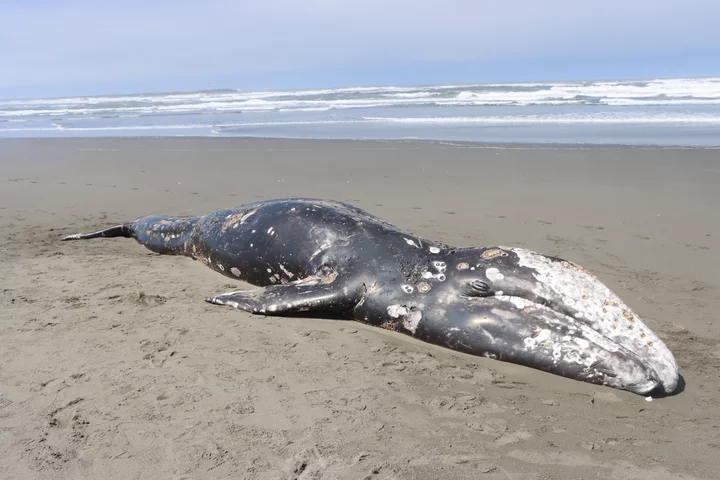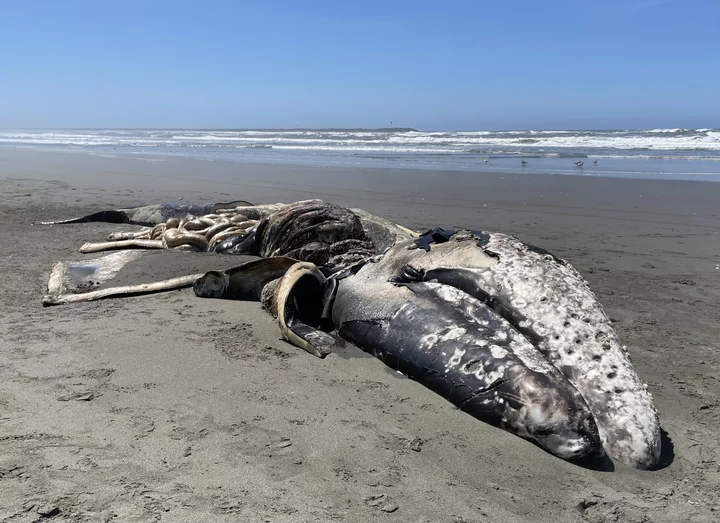Photo by Allison Lui (CPH MMSP), NMFS Permit # 18786-05.
###
A gray whale carcass was found earlier this week on the beach at Bunkers, a popular surf spot in the Samoa Dunes Recreation Area.
Researchers from Cal Poly Humboldt Marine Mammal Stranding Program responded to the scene Tuesday to collect samples, and according to Director Dawn Goley, this particular Eschrichtius robustus was a male juvenile measuring 27 feet long.
“It was emaciated but showed no additional signs consistent with a ship strike or fatal killer whale attack,” Goley said in an email to the Outpost.
Yes, orcas, aka killer whales, are known to attack gray whales. In fact, just last week, a 28-foot gray whale carcass — with fresh orca tooth marks in its flesh — was found stranded near Point St. George in Del Norte County. Days earlier, passengers on a charter boat watched and filmed as a pod of orcas attacked gray whales near Castle Rock National Wildlife Refuge. (Click on over to our sister site, Wild Rivers Outpost, for video of that encounter.)
Gray whales on the West Coast have had a rough few years. Since the start of 2019 they’ve experienced an elevated number of deaths and strandings, a trend that NOAA Fisheries has designated an Unusual Mortality Event. Between January 1, 2019 and February 8 of this year, 613 stranded gray whales were found between Puerto Vallarta, Mexico, and the Chukchi Sea in northern Alaska, according to Humboldt Baykeeper.
In the past three years, no less than 10 gray whale carcasses have been found between South Humboldt Bay and the Oregon border, according to Baykeeper Executive Director Jennifer Kalt.
Independent scientists coordinated by NOAA Fisheries have yet to determine the cause of this Unusual Mortality Event. They’re using data and samples to study a possible causal link between the deaths and recent changes in the ocean and ecosystem.
In the spring, gray whales swim north on their annual migration from breeding grounds in Mexico to summer feeding grounds off the coast of Alaska, and Goley said that, even before the current Unusual Mortality Event, it’s not unusual for strandings to occur this time of year in northern California. Nor is the emaciated state of their carcasses necessarily reason for concern.
Gray whales fast during their spring migration, “and some simply don’t have the stored resources necessary to return to their summer feeding grounds,” Goley said. She and her fellow researchers performed a necropsy on the whale stranded at Bunkers, sampling the tissues to help determine the cause of death.
Video of the rotting, post-necropsy carcass can be viewed below.
If you should happen upon a stranded marine mammal, you can report it via Cal Poly Humboldt’s Marine Mammal Stranding Program hotline, 707-826-3650, or email them at marinemammals@humboldt.edu.
Photos and video by Ryan Burns.


CLICK TO MANAGE